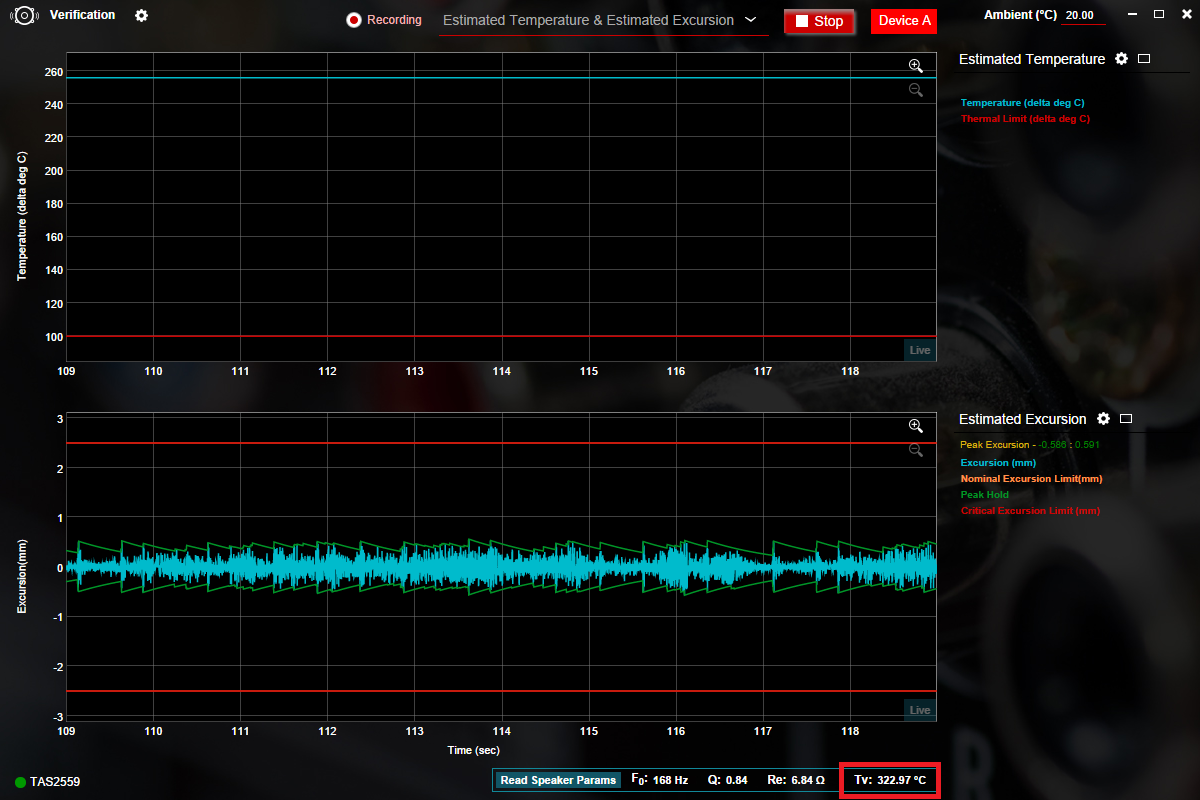Other Parts Discussed in Thread: TAS5766M
Hi.
I am trying TAS2559 EVM with a Full-Range Speaker.
(4-ohm, 5W, 42-mm diameter)
I measured speaker parameters using Learning Board (NOT Learning Board 2).
In TAS2559 APP, I inputted speaker parameter values manually.
(TAS2559 APP cannot open/import Learning Board ppc3 file.)
While tuning and audio processing,
Estimated temperature(Tv) shows over 300 degrees in verification window.
It is weird that coil temperature rises so high rapidly.
I think speaker parameters measured from Learning Board can be used in TAS2559.
Is it possible to use speaker parameters measured from Learning Board (NOT Learning Board 2)?
Or are there abnormal parameters in table below?
Speaker Parameters from Learning Board
| Driver | ||
| Re | Ohm | 3.42 |
| Sd | cm2 | 8.55 |
| Driver Model - Thiel Small | ||
| Fs | Hz | 168 |
| Qts | 0.468 | |
| Qms | 3.89 | |
| Vas | liter | 0.0398 |
| Qes | 0.532 | |
| Driver Model - Physical (Lumped) | ||
| Bl | Tm | 3.97 |
| Cms | mm/N | 0.387 |
| Mms | g | 2.32 |
| Rms | Ns/m | 0.629 |
| Inductance Model | ||
| Le | mH | 0.288 |
| L2 | mH | 0.112 |
| Ke | 0.336 | |
| Temperature | ||
| Rtv | K/W | 12.3 |
| Ctv | J/K | 1.25 |
| Rtm | K/W | 6.61 |
| Ctm | J/K | 33 |
| Rtva | K/W | 2510 |
| Temperature Coefficient | 1/K | 0.0033 |
Best regards,
Kee


